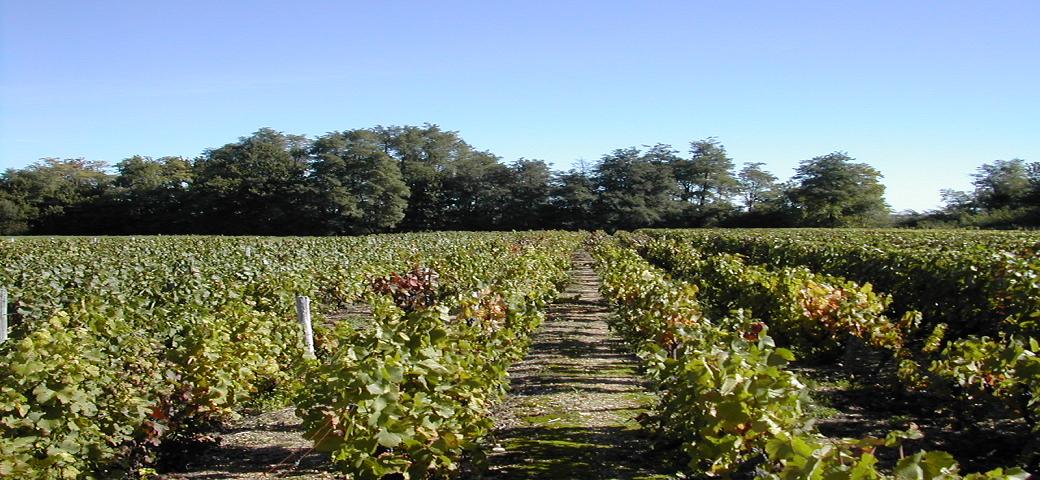Turning wine grapes destined to rot on the ground into value-added products is the focus of a new research project led by Dr Amanda Dupas de Matos, Consumer Sensory Researcher in the Food Experience and Sensory Tasting laboratory, aimed at helping winemakers reduce the amount of grapes going to waste.
Vineyards sometimes thin around 10-20 per cent of their grapes during summer to balance the fruit on vines and improve the quality of the remaining grapes. These ‘green grapes’ are not fully mature and once on the ground are left to rot. They do however provide some benefit to the vines as compost and mulch.
Using existing winemaking and bottling facilities before the main harvest, the thinned grapes can be collected and processed into juice, or verjuice as it is known (‘vert jus’ in French means green juice), which can be used in a variety of ways from dressings and marinades to cocktail/mocktail ingredients or as a drink on its own. Like wine, verjuice vary in flavours, depending on the grape variety, time of season picked, and the processing method used. The juice is not fermented, so it is non-alcoholic.
Dr Amanda Dupas de Matos won early career researcher funding from Massey to conduct both qualitative and quantitative research in 2022 to discover how New Zealand consumers respond to verjuice and compare this with producers’ understanding of the product and the way they market it.
She interviewed some international and New Zealand wine and verjuice makers in depth to understand their motivations, processing methods and challenges in making and selling verjuice.
Consumers blind-tasted some New Zealand varieties from different vineyards, and samples from Australia, Austria, England, Iran, Portugal, and the US.
She says some of the findings surprised winemakers.
“Interestingly, the consumer participants perceived far more complexity in the flavours than the winemakers themselves appreciated, which may be attributed to the large range of products the consumers evaluated. Understandably, their focus is more on the wine-making, so less attention has been given to the potential of verjuice and its marketing.”
The consumer participants specified what information they expected to find on the labels (e.g., alcohol-free, product story, the sort of taste descriptions you get on wine bottles, and clear direction about what it can be used for, etc.), and what size, shape and colour of bottle, including the type of closure, would signal the different uses – smaller for dressings and other cooking uses, and larger, traditional wine bottle shapes for verjuice intended as a cocktail ingredient or as a drink on its own.
Dr Dupas de Matos has communicated her research findings to winemakers, hoping that clear guidance on consumer taste profiling and packaging expectations will encourage more winemakers to consider going into production by taking a lot of the risk out of launching a new product.
“Whereas it is a more established product in Europe, dating back to medieval times, New Zealand consumers are not very familiar with verjuice and need information and recipes to prompt them to try it,” she says. “As a dressing or marinade, verjuice is softer than vinegars and citrus juices, and so does not overpower fish, shellfish, chicken, and it is certainly more delicate as a salad dressing.”
She says she is excited about the opportunity for New Zealand winemakers to turn this waste material into a secondary income stream, which would also help with sustainability efforts.
“Like many companies, winemakers are looking for ways to add value and reduce waste streams.”
Dr Amanda Dupas de Matos
Matos studied verjuice chemical and sensory characteristics for her PhD at the historic University of Padua in Italy, in Conegliano, the region of Prosecco – the village that gave its name to the light sparkling wine from the region which has boomed in popularity over the last few years.
She says that a sparkling verjuice could well become a non-alcoholic complement to Prosecco and other light sparkling white wines as an ingredient in cocktails like Spritz. Consumers are increasingly looking for non-alcoholic, healthy drink options. Part of her PhD study was to evaluate the components of verjuice, which is rich in antioxidant polyphenols, and naturally low in sugar.
Dr Dupas de Matos came to New Zealand in February 2020 to take up a research position at Massey University, just before the first lockdown. She is now overseeing the Feast Laboratory on the Manawatū campus, which carries out a wide range of consumer testing for New Zealand food industries and in the interests of consumers.
“Understanding consumer responses to foods and food packaging is essential to the success of new product launches – the failure rate is very high without it. New Zealand companies rarely have the resources to carry out such in-depth consumer testing themselves,” she adds.
The Feast Laboratory was established five years ago by Professor Joanne Hort when she moved to New Zealand from the UK, importing the consumer testing methodology she had developed at the University of Nottingham.
The first, qualitative stage of the research has been published online in the Australian Journal of Grape & Wine Research. She is currently writing up the results of her quantitative research with consumers, which she says will present a better guidance to winemakers of the product’s potential.
Dr Dupas de Matos says the summer holidays are a good time to introduce yourself to verjuice. Here are some of her favourite recipes for starters, from a website devoted to verjuice recipes.
- https://www.maggiebeer.com.au/recipes/verjuice-spritzer
- https://www.maggiebeer.com.au/recipes/verjuice-lime-and-bitters-mocktail
- https://www.maggiebeer.com.au/recipes/cider-poached-chicken-asparagus-and-mayonnaise
Source: Massey University












